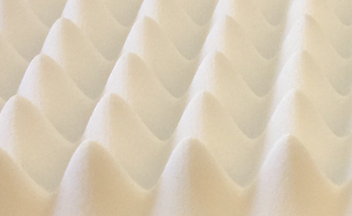Welcome to the Onshape forum! Ask questions and join in the discussions about everything Onshape.
First time visiting? Here are some places to start:- Looking for a certain topic? Check out the categories filter or use Search (upper right).
- Need support? Ask a question to our Community Support category.
- Please submit support tickets for bugs but you can request improvements in the Product Feedback category.
- Be respectful, on topic and if you see a problem, Flag it.
If you would like to contact our Community Manager personally, feel free to send a private message or an email.
Efficient Egg Crate Pattern
 caylan_larson
Member Posts: 2 ✭
caylan_larson
Member Posts: 2 ✭
I'm looking for advice in creating this egg crate pattern. I've tried using the pattern tool on a lofted object but it quickly overwhelms the service. Any ideas? My eventual goal is to have an easily to modify model that lets me measure and target a surface area.


0
Comments
Another thing to try would be to derive a unit part into a new Part Studio and see if that performs better when patterned
https://cad.onshape.com/documents/264330dd482c495193ce6afb/w/59b5225c7f8944039e940395/e/599df8ca17cb4515bde0ae96
I have a basic series of egg-shaped cones in a 3x3 grid, but rather than trying to chamfer and adjust how they all fit together, is it possible to *delete* that shape from a solid block?
I want to delete Part 2 (in orange) from Part 1 (just a basic square blind-extruded 1"). Then I want to chamfer and fool with the resulting part.
I've tried to tell the Revolution to 'Remove' from the extrusion (does not resolve), tried to use Boolean to delete Part 2 from Part 1 (does not resolve), not having much luck here.
https://cad.onshape.com/documents/0d1ae8128c714630aedff1a5/w/1f526a575a9a419794b02b63/e/c3db319bec674c1aa0ae0007
The rule your solid is breaking will be the one about "zero thickness geometry" which is a no-no.
If you search this forum for that phrase (or google the www) you will be presented with typical examples.
The cure is simply to raise the boolean "tool" (orange solid in your graphic) slightly to eliminate the problem nodes.
Other rules for a valid solid are so obscure I can't remember any right now! This is the usual culprit, particularly from a Boolean operation (and that applies equally to boolean addition). If you ever have to model something where corners, rather than faces, of adjacent bodies touch: you will need first to split the body up so that those edges are on different bodies (Parts, in Onshape-speak)
The definition of manifold is such that at all points in the resultant bodies, an infinitely small sphere may not encompass more than 1 region of solid.
In the above image, the boolean would fail because at the top of the cones is a zero thickness area and an infinitely small sphere would encompass two regions of solid.
Another one of life's great mysteries resolved
@andrew_troup is correct - raising the orange block would be the solution.
But you always make one remember that a picture is worth thousand words..
Although the wavy pattern can have any shape, based on the available tooling later (assuming your modeling something for physical world), most eggcrate foams can be created to sweep a perfect sinus wave (length, amplitude etc free to choose) over another perpendicular sinus curve that matches the amplitude and wave length to get the perfect grid pattern of repeating smooth domes.
I like to start with a block and cut (or divide) by this sinus*sinus surface.